* (restored/expanded)

‘Pedro Costa is a director who I can only describe as the Samuel Beckett of world cinema: and even that comparison doesn’t quite convey how severe and how uncompromisingly difficult his movies have latterly become. This is the Portugese film-maker Pedro Costa – a cult master, a figure who is widely considered on the festival circuit to be for hardcore auteur followers only. A Pedro Costa film does not get a “release”. It does not “do business” – any more than a piece by Edgar Varèse rules the iTunes chart. I myself have seen critics and writers at festivals gird their loins reasonably happily for a Béla Tarr film. But at the words “Pedro Costa”, they flinch. A haunted look comes into their eyes.
‘Now, I can understand this. But considering the arc represented by Costa’s major features O Sangue, or Blood (1989), Ossos, or Bones (1997), No Quarto Do Vanda, or In Vanda’s Room (2000) and Juventude Em Marcha, or Onward Youth (2007), I now believe that his career arc is one of the most fascinating in modern cinema. Following this career is not, however, easy and Costa does not make it easy, increasingly setting his films in the collapsing rubble of Fonthainas, Lisbon’s grimmest slum. He favours interminably long shots, long silences, long aimless semi-audible conversations between semi-comatose drug addicts: like watching a Big Brother live feed direct from some of the most poverty-stricken places in Europe. When Onward Youth was briefly shown in the UK last year, it appeared under the title Colossal Youth, and the trade press cheerfully dubbed it “Colossal Bore”. My colleague Cath Clarke wrote about this film last year with great insight.
‘This director increasingly contrives scenes in cramped rooms in semi-darkness, shot from below, with perhaps one light-source in the form of a window in the top right corner of the frame, which glows without illuminating the scene. His most recent film is Ne Change Rien, which applies this technique, eccentrically, to a film about the singing career of the French film star Jeanne Balibar, who is shown rehearsing, performing and recording in a weird crepuscular darkness.
‘Pedro Costa’s work has evolved from conventional dramatic movie-making into an experimental docu-installation form, which is something between a real-time “reportage” cinema and an exhibition of animated portrait images. However difficult and punishing his films are, I am becoming weirdly hooked on them. They deserve a hearing from people who are open-minded about cinema as an art form, and particularly as an experimental art form.
‘Blood (1989), is Costa’s first film, made in black-and-white, about the relation of two brothers and their father. It looks beautiful, and is clearly influenced by Truffaut’s The 400 Blows, and I think also has something of Buñuel’s Los Olvidados. It could have been made 40 or even 50 years ago, and Costa contrives a Nouvelle Vague feel, along with a Hollywood-ised reference to Nicholas Ray and maybe Charles Laughton’s Night Of The Hunter.
‘Bones (1997) is, I think, Costa’s best film. Maybe it’s even some sort of masterpiece: a dark, mysterious and mesmeric movie, shot in colour and set in Lisbon, among the urban poor. The faces that Costa captures are compelling, and disquieting, the kind of faces you would see in an unsettling dream: particularly the young woman at the very beginning, and also the face of Tina, who has just had a baby, and whose partner, played by Nuno Vaz, takes it away to try to get rid of it, trying first to give it to the hospital nurse and then to a prostitute. They are like the faces of ghosts, or faces of the dead. The atmosphere of Bones is extraordinary, like a horror film without the horror, or like a social-realist version of David Lynch’s Eraserhead.
‘Like many of Costa’s films, it has been wearily or amiably dismissed as miserabilism – and yet this isn’t how I responded to it. The film is about poverty, yes, and this is a subject which some people in both the movie business or the journalism business think is bad taste, as if poverty doesn’t really exist all that much and to emphasise it is a callow pose or crass exaggeration of style. Costa’s film takes poor people seriously and does not apologise for the moral and even spiritual seriousness of what it is doing. Watching this, I remembered a resonant line from Dickens’s Bleak House: “What the poor are to the poor is known only to themselves and to God.”
‘With In Vanda’s Room (2000) and Colossal Youth (2007), Costa’s work moves to a dauntingly austere mode, a mode in which traditional cinephilic references are much less useful. To continue the Beckett analogy, Blood represents his “Molloy/Watt” phase, the early phase in which his work is at its most traditional and accessible. Bones is the “Godot” phase, in which his identity becomes strongest and most distinctive, and yet still accessible in normal cinematic terms, and In Vanda’s Room and Colossal Youth are his opaque and difficult, later phase, his “Imagination Dead Imagine” phase.
‘In Vanda, we see the return of two personae from Bones. They are the sisters Zita and Vanda Duarte, now overtly playing themselves, and in fact the film now sheds the ostensible fictional mode of Bones, and now becomes far more of a documentary portrait. Zita – whose face in closeup was so haunting at the beginning of Bones – and Vanda are now fully paid-up heroin addicts. Long, long scenes show them in their dark, cramped, squalid room in the Fontainhas slums of Lisbon, doing smack and talking inconsequentially about nothing much. The movie itself, with its series of fixed camera positions, is closer in spirit to an exhibition of photography, a succession of cinematic tableaux. The vivid, ghostly close-ups of Bones do not feature.
‘The people, living fragmented and embattled lives, are shown in tenements which are in the very process of being torn down. Yet there is no positive spirit attached to this, no sense that the Portugese state is moving them to better quarters: just a grim feeling that these houses are awful and even these are being destroyed. In one scene, taking place in crepuscular gloom, one man complains of a fear of death, and another says to him: “The bad never die. It is the innocent who die” – a very Beckettian line, especially when you realise that it is meant to be reassuring, and that the speaker considers himself and his companion to be one of the “bad”.’ — Peter Bradshaw
___
Stills






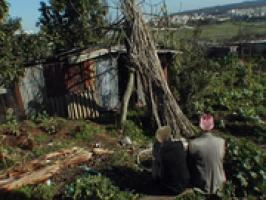





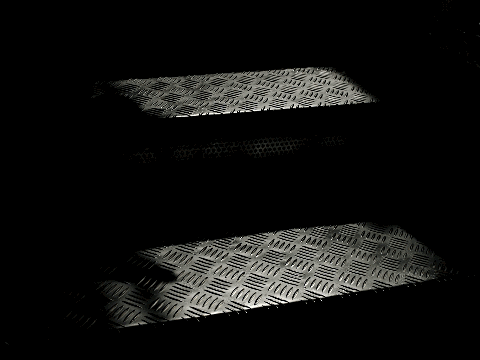


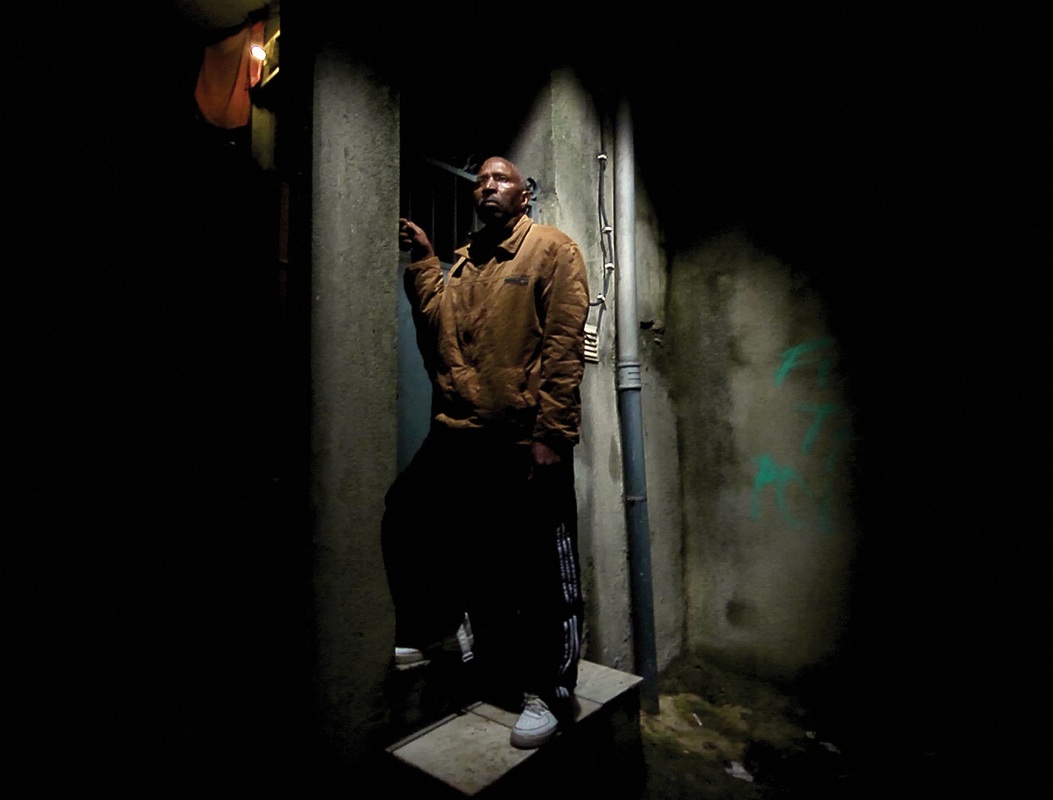



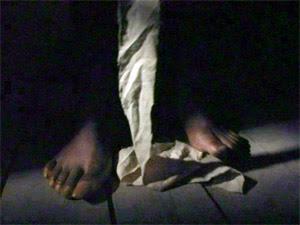
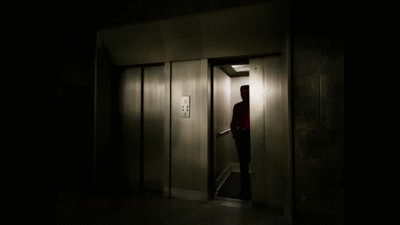




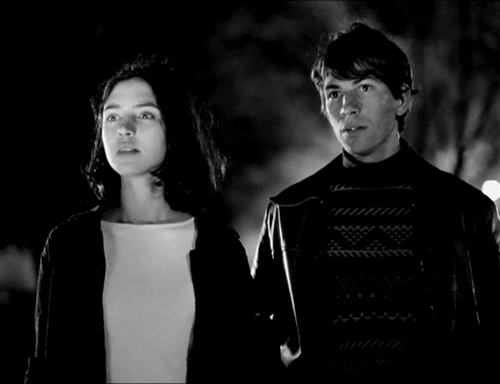









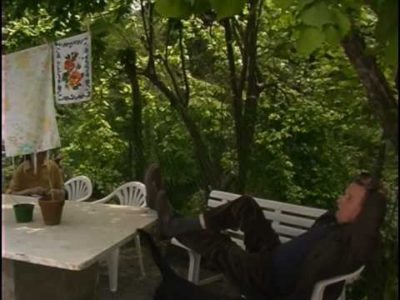






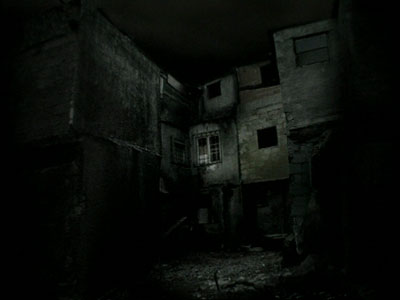







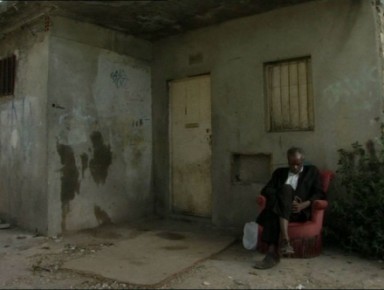

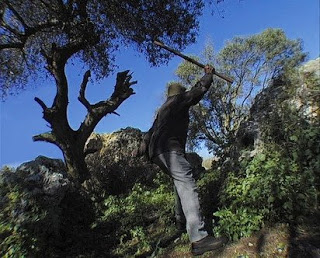
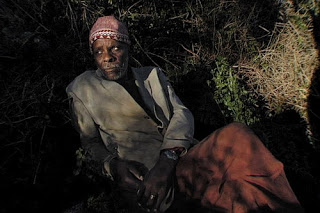



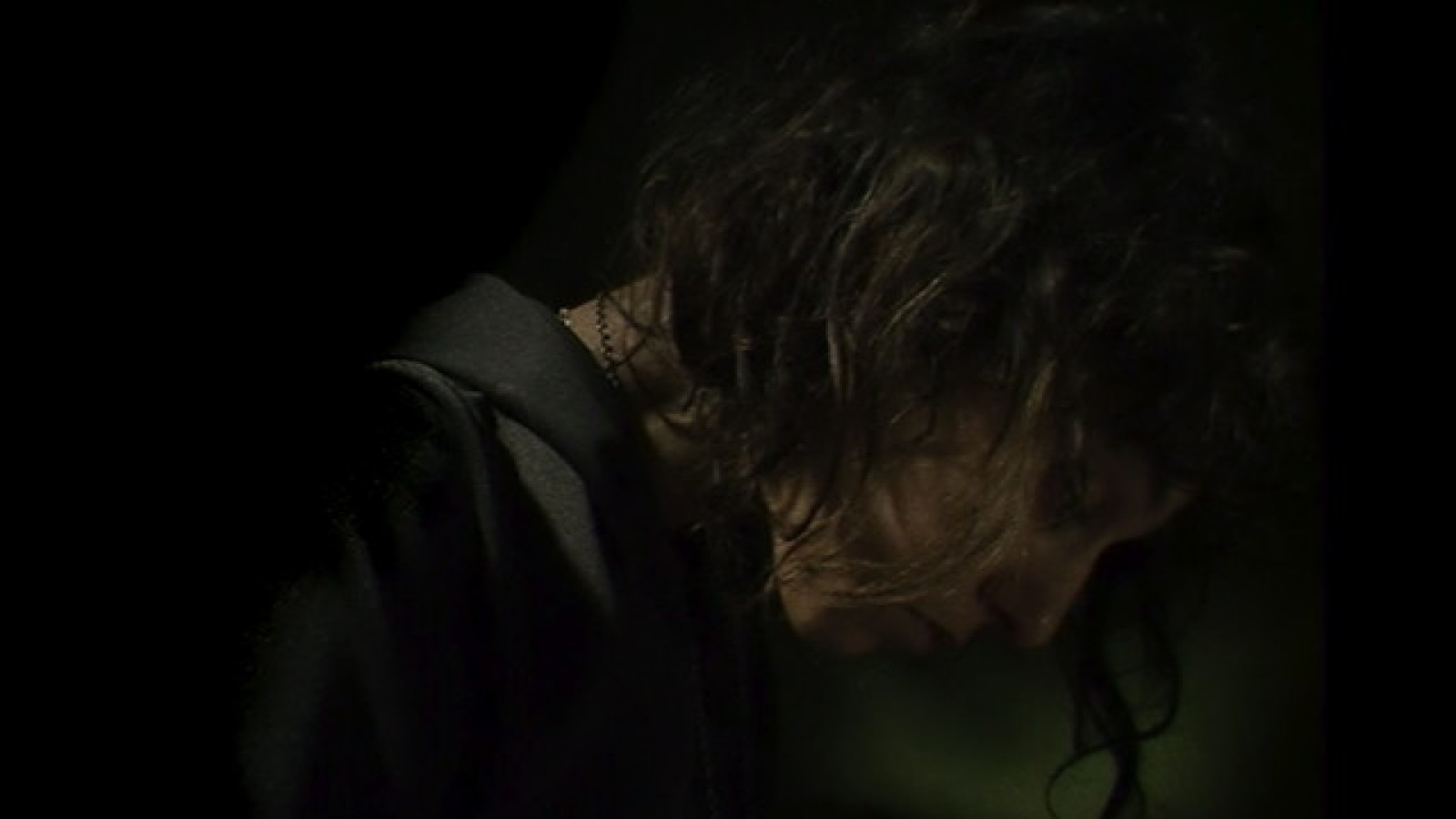
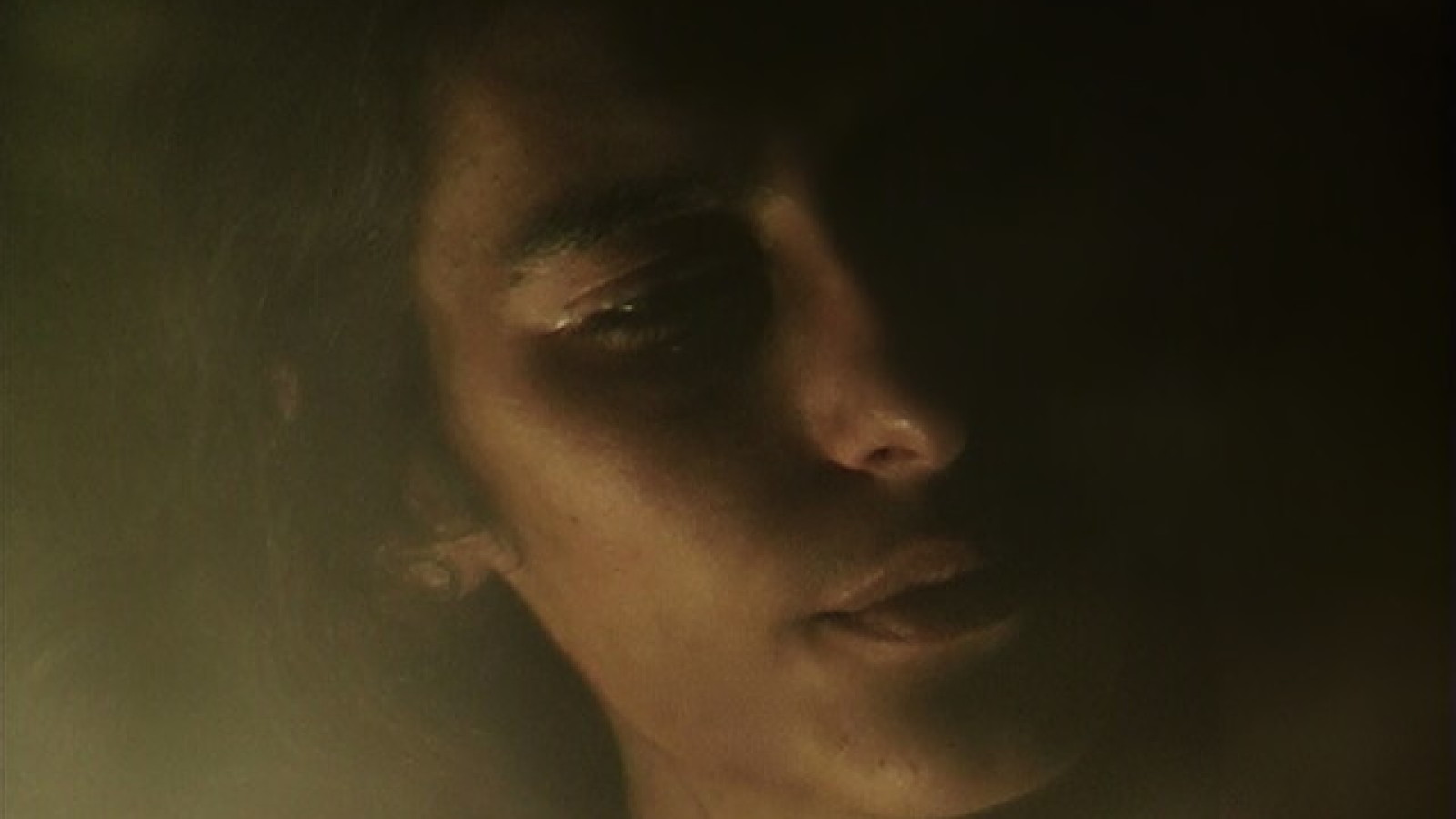
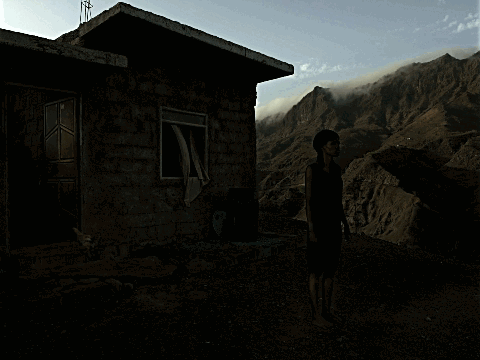
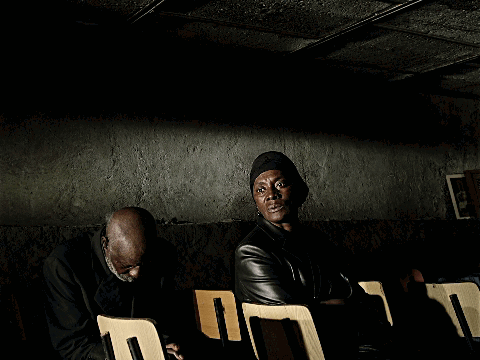
_____
Further
Pedro Costa @ IMDb
Pedro Costa’s 10 favorite films
Pedro Costa: Portuguese director who fashioned Gil Scott-Heron’s film prayer
Letters from Fontainhas: Three Films by Pedro Costa
Colossal Works: The Films of Pedro Costa
Interview: Pedro Costa @ Film Comment
Pedro Costa by Michael Guarneri @ BOMB
Pedro Costa page @ Facebook
Let Us Now Praise Famous Men: The Films of Pedro Costa
‘Films of the Future [on Pedro Costa]’, by Jonathan Rosenbaum
Adventure: An Essay on Pedro Costa
A Cinema of Refusal: On Pedro Costa
Standing on Opposite Sides of the Road: Pedro Costa on Horse Money
The Politics of Pedro Costa
Pedro Costa: The “Unknown” Auteur Deals Out Horse Money
Pedro Costa @ TSPDT
In the shadows of catacombs: a conversation with Pedro Costa
Past, Moving Forward: The Little Theater of Pedro Costa
PEDRO COSTA ON THE SECRETS OF WARHOL
A Desperate Utopian Dream – Pedro Costa: an Introduction
ON REVENGE AND TRAGEDY IN CINEMA AND LIFE
_____
Extras
HBO Directors Dialogues: Pedro Costa
Jeff Wall on Pedro Costa
Masterclass de PEDRO COSTA
Pedro Costa’s Ossos: Video Essay – The Seventh Art
______
Interview

NOTEBOOK: What was the difference between making Ne change rien—which is about working to make music—and Where Does Your Hidden Smile Lie? , which is about making a movie?
PEDRO COSTA: I could answer it another way. For the film about Danièle [Huillet] and Jean-Marie [Straub], that began as a request from Cinéma, de notre temps, and that began as a 60 minute film for the TV series in a certain format that I should more or less respect. When I prepared myself to shoot the thing, we really prepared. There was a film [Sicilia! ], there was a declaration of film production, and I was a bit afraid because I had this idea that I couldn’t to shoot Danièle and Jean-Marie shooting their film or being on a set because you can’t see anything. We either had to see the work with the actors—you could probably see something there—or the editing. So I chose the editing, knowing it would be very difficult technically, just because it takes place in a dark room, and the concentration involved. And, above all, Jean-Marie and Danièle, who I knew a little bit before, but I had an image of what it could be. So I had sometimes two cameras, I had someone assisting me with the cameras; we were there always, always from 9-7, so we ended up with 100 hours or more of footage, just because I wanted to have it all. I was afraid of missing that moment.
For this project, it was a bit different, there was no film, and there is no film still.
NOTEBOOK: There is an album.
COSTA: There’s an album, but there’s never a moment I said to Jeanne [Balibar] or the musicians “I’m doing this to make a feature, I’m doing a documentary.” It began because I knew Jeanne, apart from the fact that she’s certainly the actress today I most admire. She kept inviting me to things, to a theater play, or “come see this, even if you don’t like theater,” that she was going to be in the studio and come spend some days; simple things. There was a moment when I said “yeah okay I’ll come;” probably I didn’t even say I’ll bring my camera, I just arrived with my friend who does the sound and the musicians weren’t surprised. And we were there as the other musicians were, the technicians. So there’s this formality with Danièle and Jean-Marie that was not here. I don’t want to say the work with Jeanne was lighter or more superficial, but it’s a bit different than the work done from the editing of the film and especially Jean-Marie and Danièle’s methods. First, in this film, there’s much more people around, even if you don’t see it on screen, there’s a lot of intrusion. You can feel it a bit in some moments, there’s guys testing, some rock sounds, even some dispersion.
NOTEBOOK: The way the soundtrack works, you are never quite sure what the audio source is, whether it’s coming from what’s live on camera, or if it’s a playback loop, or if it’s off-camera.
COSTA: Exactly, there’s friends visiting, there’s people just sitting around. If the shots were wider or if my camera moved like in One Plus One, you could see the same thing, guys sitting around in funny hats. Of course, Jeanne and Rodolphe [Burger]—the corpus of the thing—were as concentrated and anxious as Jean-Marie and Danièle were, and for me that felt familiar. I saw the same protection. What I like about this film, and what related to Where Does Your Hidden Smile Lie?, is the generosity they share. “If you fail, I’ll fail”—very simple. Even if I don’t like the projection here [in Cannes], if you see the film with a good print and good sound in a smaller theater, you’ll see the eyes, which are very important. Small things in Rodolphe’s attention and protection, that’s very obvious. There’s a link, a bond between him and the other guy, the bass guy, that’s very close, almost an out-of-time bond. There’s something very touching about that.
NOTEBOOK: The interaction between Jean-Marie and Danièle in Where Does Your Hidden Smile Lie? is conversation. It’s about the making of Sicilia! , but it goes far beyond that, whereas in this film, all dialog is strictly about the sound and getting the right sound, finding that tenor in construction and repetition.
COSTA: I was present for all the moments when you see Jeanne practicing the Offenbach opera, and that is probably the part of the film where I have more rushes. There you can see the same thing as between Jean-Marie and Danièle, the same severity, strictness, some very funny light tones, some erudition, there’s more moments like “think of this Mozart piece,” but then building the film, putting the pieces together, one part I was afraid of was charging these scenes so much, too much. It’s a film about a form, I think, and it’s Jeanne’s form—tempo—and if I would put more of the opera or the rehearsals, it would just become…I don’t know if I had the material to be that kind of film. Jeanne says it’s more like Party Girl, but the gang, you know in They Live By Night when they go to the cabin in the forest and stay for four days? It’s Nick Ray, it’s [Robert] Siodmark. They’re runaways, one has a guitar…they are running from something. It could be called The Fugitives.
NOTEBOOK: Can you talk about your visual approach to the project? You shot it yourself on digital in color, and then printed it on film. I’ve seen digitally shot videos projected here in Cannes digitally, but I’ve never seen one of your digital films projected that way.
COSTA: I’ve done four or five films like this, and now I’m doing video, color—not HD, just regular digital—and then I do the transfer to 35mm. The problem with this film was that I wanted real 35mm, not color stock, but the real black and white negative, the silver nitrate. It’s pretty expensive; five years ago you had Agfa, Kodak, Fuji, now you only have Kodak. The lab in Paris told me that in two years you couldn’t do this, it’s over, it’s too expensive, it’s too dangerous.
NOTEBOOK: It’s a beautiful effect though, it reminds me of the black and white version of that high contrast digital in Godard’s In Praise of Love, the vibrancy of the highs and lows. Did you light it yourself?
COSTA: I did some things, but I brought no equipment, really. I just improvised again, more like I did in In Vanda’s Room, with some aluminum foil or light boards off-camera. That’s one funny thing, sometimes the light is sun, you think it’s a lamp but it’s the sun, it’s real, bright sun. That’s Hollywood; I mean the good Hollywood. And sometimes it’s night and you think it’s the sun…so I just helped a little bit. The shine in the eyes, things like that, very, very small things. I was worried, actually, because I often have the tendency to pull back…
NOTEBOOK: But some of the close-ups are incredible, the shot that’s also in the shorter version of this film, that profile of Jeanne that looks like Dietrich-Sternberg lighting…I don’t know if that was the lighting of the club she was singing at or if it was your lighting.
COSTA: That was the club lighting plus a little bit—maybe—of manipulation, but just little things, density, contrast. That’s a funny shot.
NOTEBOOK: Is it sync sound or was the soundtrack remixed?
COSTA: Everything’s direct. There’s only one shot—the one in Japan—where the sound is from elsewhere. The image is something I did in Japan, I went to a cafe in the morning where we shot the concert in Japan. I went with Nobuhiro Suwa to Naruse’s grave, and this cafe faces the cemetery. The door in this shot, you can see it in the window…there’s a moment where you can almost see the gate of the cemetery. I went there and saw the grave and then I went for coffee and these two women were there, and they looked at me and I looked at them. And I set the camera simply on the table, I had no tripod, they smiled, I smile—Japan! But I had to add sound in the end, so when I mixed the film, I added this very tiny, tender sound. Every time I see this shot it reminds me of Jacques Tati, I don’t know why. But there’s a lot to be said about this shot. I would like to do a whole film like that—not silent—but there’s something there.
NOTEBOOK: Naruse’s favorite actress, Hideko Takamine, once said that Naruse told her that his ideal film would be one where she stars against blank white backdrops. In a way, Ne change rien reminds me of this project, bodies hanging against a minimalist abstraction.
COSTA: We tried to find something that’s under the surface of this film, not even a story, there’s more than that, something about fear, the light and blackness. I’m sure it’s not a documentary in that sense, a documentary about work, it’s just about trying to get somewhere. But that comes from Jeanne’s fragility, she’s a bit misplaced at the opera, she’s a bit misplaced in tempo with the guys, the pros.
NOTEBOOK: Did you complete this film a while ago? Because I first saw footage from it two years ago.
COSTA: We shot it a long, long time ago. The first time was a concert in 2005, I believe. And then every year I shot more, in the way I told you, I came and went. The last time I shot was late 2007. I stopped for a while, I had a short film to do, and then I came back to this, sat down with the editor. From November until March I was editing and handling the lab things.
NOTEBOOK: Was Ne change rien the same as with In Vanda’s Room and Colossal Youth where you had to sift through hundreds of hours of footage?
COSTA: No, we had much less. I had something like 80 hours for this film, because all the concerts are just an hour and I did not want to make a concert film where you go backstage or in the bus. I just shot the moments. Even the tiny small things that are in the film when the practice is over and the team goes to prepare food or whatever, really the rush just ends there. It’s like Warhol, an experimental thing where you go to the end of the tape. I had much less material.
NOTEBOOK: Was there much interaction between you and the musicians? If I remember correctly, you talk to Jean-Marie in Where Does Your Hidden Smile Lie?.
COSTA: Yes, with Where Does Your Hidden Smile Lie? the beginning was difficult, I was a bit lost in how to do it, and I found the door very, very late. But in this one, no, sometimes I told Jeanne something, but she’s an actress so she knows what to do, she slightly turns a bit more to the light—but just for the light, not for the mise-en-scene like “let’s do a scene like this”—I just served the thing, just being there, like a public service. [laughs]
NOTEBOOK: Are you working on something now? The two shorts came after this was shot.
COSTA: The shorts came in between.
NOTEBOOK: I love those shorts especially because of their length. When you were in New York for your retrospective, you talked about wanting to set up a television station in Fontaínhas and these shorts felt like episodes in a potential television series.
COSTA: I would love to do that, but it’s impossible. Every day it’s more impossible. But to see this idea more and more contemplated from here in Cannes it makes so much sense. I’ll do another short, more a museum thing, and then I’ll go back to Japan to do another short film, I don’t know the idea, but it will be a film with other directors, probably Godard and Sokurov.
NOTEBOOK: From In Vanda’s Room to Colossal Youth there’s a move towards more…I want to say fictional elements, but not really fictional, just a move away from specific documentary that allowed for room of mystery. The two shorts definitely continued in this vein.
COSTA: The films with my gang in Fontaínhas—it’s not only me—they need that “fiction,” or what we call fiction, they need it badly. That’s very obvious and natural, this necessity, and it explains everything. We know each other very well now, it’s been a long time–Vanda, Ventura, all the boys…well they’re not boys anymore. At the beginning it was like “let’s do the cop,” and “let’s do the chase,” and “okay another boring one,” and finally they are proposing—as in Tarrafal. I said I have this money, what shall we do? The second day this guy came with this letter about being expelled from the country, so let’s do something around that, he said let’s do that story, his story. I said where should we do it and he said “not here,” “let’s find a place.” That was the first time they said let’s imagine something, let’s imagine our territory. The problem is they don’t have a territory; they are between the new neighborhood, a no-man’s-land, and a freeway.
NOTEBOOK: But there’s that amazing sequence in the forest in those two shorts, where is that?
COSTA: [Laughs] That forest is…[indicates a small square]
NOTEBOOK: Oh, so just outside the frame there’s nothing?
COSTA: It’s ridiculous! But they needed that, and they wanted that. So now I think I should work on that, hear them much more, and go that direction. I think it will get closer to something…”purer” is not the word, but something verbal I’m sure. They want to tell the story with four or five elements, I don’t know what they are…I don’t want to talk about abstraction or minimalism but we’ll probably go that way. So you are right; when I started, even with Ossos, I really wanted to see something, find out, put things in relation to find out about them. But now it’s free. We don’t care any more about a statement.
There used to be even a critique in what we were doing, and they say we should show a bit more, about how the other half live, and I said “no, this is just me looking at you.” Now I don’t care and they don’t care, and it’s about something else. It’s freer. I hope the form will be freer. The monster is that it relates much more to the past than the present. They don’t care much about the present, that’s just it. They don’t think a second about the future, they are completely numb, and violent, and much more violent than before. They are turning their backs and it’s all about the past. It’s all about missing people and missing the land. That’s why I want to go back now.
NOTEBOOK: That sounds like a much more integrated approach to collaboration than what you are doing in Ne change rien or the Straub-Huillet film.
COSTA: Yes, and it’s also much wider, more vast. In the beginning it was Vanda, it was a girl, then it was her sister and her friend. Now everybody is Vanda.
NOTEBOOK: Does that make Ne change rien, this kind of film, more manageable than your work in Fontaínhas?
COSTA: These are really prototypes, all of them, and this was unique in that it comes from no declaration of film, for the first time, not even a “let’s see” attitude. It was strange, every time I went to see Jeanne, coming with a camera. I just read a Variety critique of my film, it says it all—”Arty fans will be enchanted” or something, “normal people, run away!” It’s funny, because I know when “normal” people and Variety walk out of this film—it’s when people start working. It’s like Godard says, when people see a tiny bit of someone working in a film, it’s dead.
_____________
14 of Pedro Costa’s 19 films
_____________
Casa de Lava (1994)
‘The colonial histories of Cape Verde—and the lives many of that country’s displaced emigrants now lead in Lisbon—have taken a central role in many of Costa’s recent films, but his rarely seen second feature is the only one of his movies thus far to have actually been shot in the archipelago. Leão (Isaach de Bankolé), the comatose laborer whose removal to his home at Fogo jump-starts the film, is a clear precursor to Ventura, with whom he shares a profession and a past. But the revelation of watching the movie now is how much fierce, unblinking attention it gives to the colonists themselves: Edith Scob as an aging Portuguese woman who has made the island her ill-fitting home; Pedro Hestnes as her son; and Inês de Medeiros as the Lisbon nurse who accompanies Leão with a mixture of brashness and fear. Casa de Lava, for which Costa took inspiration from Tourneur’s I Walked with a Zombie, is one of the director’s most direct reckonings with Portugal’s colonial legacy.’ — filmlinc
Trailer
Excerpt
_____________
Ossos (1997)
‘Today, we should be able to appreciate the film both on its own terms, putting aside the works that followed, and in relation to In Vanda’s Room and Colossal Youth, the distance traveled from it to them. In and of itself, it is one of the most beautiful films of the nineties, exemplifying a current of the era’s auteurist cinema yet already reaching beyond it. The last fires of a dying European aesthetic glow in Ossos: an elliptical plot, highly composed wide shots held for a long time, the generally unmoving and silent presence of characters who preserve their mysterious density until the end. But a new energy is blowing on the embers, that of a brutal reality that auteur cinema had always avoided confronting: that impossible but oh-so-real location, those desperate people, enraged and resisting, suddenly visible, radiating a dark light. What is striking, when we consider the films that came after, is the extent to which Costa is already taking flight, despite the weight of traditional filmmaking. The people of Fontainhas—Vanda, Zita, and the others—play characters, embody parts. But Costa is already filming their pure presence in space, their strength, their resistance, capturing what is beneath the actors, the truth of the individuals. The film was welcomed by moviegoers, given a prize at Venice, praised by the critics—and co-opted by the Portuguese political class and media, seemingly stunned to discover in their city of Lisbon such a level of poverty, of which they feigned ignorance. In the career of any European auteur, Ossos would be a great first peak; for Pedro Costa, it marked the realization that he had reached a dead end, the conclusion of a certain way of making films. He could have continued in the same vein and become one of the masters of European auteur film. Leaving that well-worn path, he ventured into unknown territory, territory that politicians and the media could no longer touch. (In Vanda’s Room and Colossal Youth were celebrated by critics and festivals the world over—the latter screened in competition at Cannes in 2006—but they did not have the box-office success of Ossos. Still, they had something better: in each viewer who felt the films looking at him or her, they sparked the certainty that an essential encounter—an expansion of life—had taken place, something far beyond admiration.)’ — Cyril Neyrat
Trailer
the entire film
_______________
In Vanda’s Room (2000)
‘One look at the appalling slum where Pedro Costa has set In Vanda’s Room seems comment enough. It’s a filthy, crumbling, aesthetically-nil nightmare that one assumes can only oppress the lives of the junkies, laborers and other residents who live there. But there is life in this Lisbon hellhole, and it’s being encroached upon by the “enlightened” folks who have deigned to clear the place without thinking of where the residents can go. This displacement disguised as renewal sums up Costa’s tragic sense of irony. His film is about people who live painful, desperate lives and yet refuse to budge from the fates they may or may not have chosen but decide to play out either way—people poised on the brink of self-pity who never fall off into the abyss, and who carry on in the face of addiction, invisibility and a general ennui that mere social realism can’t contain.’ — Travis Mackenzie Hoover
Trailer
Excerpt
Excerpt
_______________
Où gît votre sourire enfoui? (2001)
‘Pedro Costa shot this portrait of filmmakers Jean-Marie Straub and Danièle Huillet at work while they were re-editing the third version of Sicilia! at the Studio National des Arts Contemporains in Le Fresnoy. A work of friendship and dedication and one of the greatest lessons of cinema.’ — Courtisane
Excerpt
Excerpt
______________
6 Bagatelas (2001)
‘Pedro Costa takes six unused scenes of Où gît votre sourire enfoui? and put them into a new context. These fragments are not only «bagatelles», but a special look at Danièle Huillet and Jean-Marie Straub.’ — viennale.at
the entire film
________________
The End of a Love Affair (2007)
‘A man is standing at the window, holding a chair. There are wafts of street noise, and occasionally the curtain flutters. A dog is barking. Then, elegiac music sets in, a lavish string arrangement, joined by Billy Holidays love-torn, tragic voice. She is singing «The End of a Love Affair», and the entire agony of the end of her life resonates in it. The man at the window has meanwhile sat down on his chair, and the sad insistence of the song portrays his emotions. Is there something like the ghost of a smile flitting over his face? «And the smile on my face isnt really a smile at all», Holiday sings, and in the end all that is proven is the manipulative power of the combination of image and sound.’ — Viennale.at
the entire film
_______________
Ne Change Rien (2005)
‘Ne Change Rien is a bold music documentary, which pulls us into Balibar’s world without conforming. Pedro Costa offers us a film that prosaically depicts in spellbinding, tedious detail the creative lives of his subjects in their connect, disconnect, beauty, and torture. As the title, taken from an expression in Godard’s L’Histoire(s) du Cinema (1988-1998) conveys, this is a film that goes nowhere. It is not about change. It sits in a purgatory, in the static, and monotonous. Costa’s ingenuity as a filmmaker lies in his ability to so resonantly and courageously interpret this. One hopes Pedro Costa will find distribution for this film, or a means of showing it for a run in major cities—but, even if he doesn’t, this film exists in the every day, in ourselves.’ — Senses of Cinema
the entire film
______________
Colossal Youth (2006)
‘Many of the lost souls of Ossos and In Vanda’s Room return in the spectral landscape of Colossal Youth, which brings to Pedro Costa’s Fontainhas films a new theatrical, tragic grandeur. This time, Costa focuses on Ventura, an elderly immigrant from Cape Verde living in a low-cost housing complex in Lisbon, who has been abandoned by his wife and spends his days visiting his neighbors, whom he considers his “children.” What results is a form of ghost story, a tale of derelict, dispossessed people living in the past and present at the same time, filmed by Costa with empathy and startling radiance.’ — Criterion Collection
Trailer
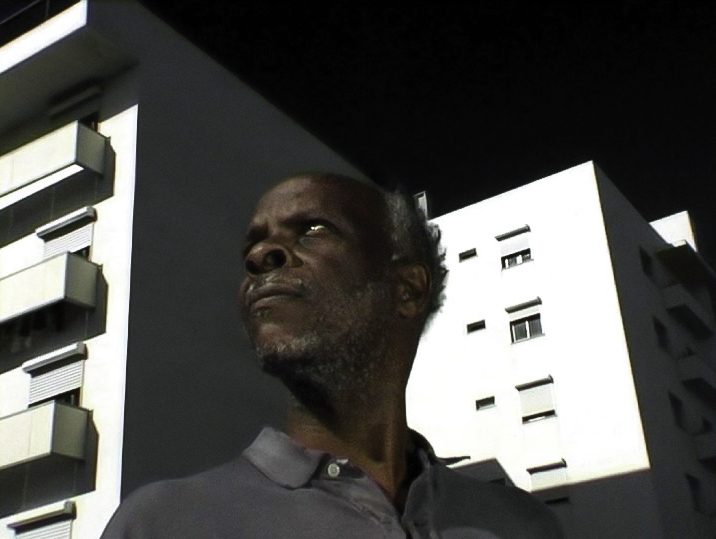
_______________
Tarrafal (2007)
‘In the first half of “Tarrafal” we listen to a conversation between several ex-Fontainhas residents about the world of Cape Verde. The pair focuses on locations and what may still be around, but eventually the topic somehow turns to a vampire story from the area about a vampire who would give letters to people and then hunt down and suck the blood of their recipients at night, though never killing their victims. Their blood was gone, but not their lives. The second half of the short seems barely related until eventually we learn that one of the characters is going to be deported, having been sent a letter from the vampiric state of Portugal that won’t kill him but will suck out something of his life. This is matched with the film’s title, “Tarrafal,” which was the location of a concentration camp in Cape Verde also known as the “Camp of Slow Death.” The political slant of this short is obvious, but it’s only half of the project.’ — By Sean Gandert
the entire film
_____________
The Rabbit Hunters (2007)
‘ “The Rabbit Hunters” focuses on Ventura from Colossal Youth, who was only briefly around in “Tarrafal,” and instead it is somewhat like a continuation of that earlier film. Again Ventura is wandering amongst his friends and spends his time playing cards and telling stories of the past, only now he’s joined by his friend Alfredo. The pair drift through the film together until with its last nine minutes the short converges with “Tarrafal,” with the same actions taking place and using similar takes. “The Rabbit Hunters” fills in details missing from “Tarrafal” and helps to give a complete story, but while there’s some definite narrative thrust in the deportation it’s really more of a commentary about the way we choose to tell stories. Costa’s statement here is that he can come upon this same material in multiple ways and tell in some sense the same narrative. There’s always an essential question in Costa’s work about what gets told and who gets to tell it. The Fontainhas trilogy moved from the filmmaker being at an advantage in telling their story to a level of equality with the subject and eventually the subject of a film in some ways overpowering the filmmaker, with Ventura completely taking over Colossal Youth. Costa’s methodology in these shorts suggest that all methods of storytelling and editing should be considered artistically valid, whether they arrive at their observations elliptically as in “The Rabbit Hunters” or more obviously with “Tarrafal.”’ — Sean Gandert
the entire film
_____________
O nosso Homem (2010)
”Is there space for a green garden?’ ‘Not even for a house’. We revisit Fontainhas, thinking of Cape Verde, the country to which José Alberto Silva will be deported but which he’s never seen before. This is controlled, hypnotic cinema, moving between life and death, reality and fiction.’ — iffy.com
the entire film
_____________
Horse Money (2015)
‘I think that each of these supposedly cutting-edge issues is handily nullified by the mesmeric power of the films themselves, far richer and more elusive than one might guess from the critical literature. Costa has long had a dream of adapting Stevie Wonder’s Innervisions album as a film, and it seems to me that he layers and structures and sequences his films like a musician in the studio. Every aesthetic choice is lovingly tuned, from the particular sound of a given space’s quiet to the precise durations of each and every interval of time to the exact shade of yellow in the windows dotting the crushed black nightscape behind the beautiful Vitalina’s exquisite three-quarter profile. Is Costa exploiting these people and places for their phantom beauty? You bet he is. Suppressing one’s own desires and attractions in the name of a hollow ideal of moral equivalency always has and always will make for lousy art. The point isn’t the attraction, but where you take it. Too much of the rhetoric around Costa is abstract, only beginning to approach the wondrous spells and haunted refrains of the new Horse Money. The artist himself reckons that he’s turned some kind of corner with this film, and so he has. Fleeter and more mobile than Colossal Youth, with a structure built on what Murnau eloquently described as “the most fleeting harmonies of atmosphere,” Horse Money finds its way into the centrifugal force that Charles Olson identified in Melville, the sense of the “inertial structure” of the revolving world itself. I could go on rhapsodizing about the wonders of Horse Money, which becomes more alluring and impressive with every viewing: the soundtrack, so lovingly layered, in which every voice is a character and nocturnal silence is the star; the sudden apparition of the boys in the trees, gazing down intently like warring gods; the great star-crossed Vitalina; and Ventura, alias José Tavares Borges, a broken man but, it seems, proudly so—proudly here. The moving force of this film originates with Ventura himself, and the spirit of fraternity from behind the camera.’ — Kent Jones
Trailer
Thom Andersen on Pedro Costa’s “Horse Money”
_____________
Vitalina Varela (2019)
‘Costa’s cinema isn’t neorealist. He fixes his actors in square-framed shots lit to resemble Golden Age Hollywood noirs or westerns, so they come to look like paintings by Old Masters. He pays close attention to natural sound, a very present but not obtrusive aspect of his films. His screenplays are oblique, repetitive, and glacially poetic tales of misfortune and exploitation. Surrounded by darkness, faces emerge in medium close-up only to suddenly drop out of frame, the way a trembling priest does at his makeshift pulpit in Costa’s new film, Vitalina Varela. There is a reason there are not many films like this. Vitalina Varela is so uncompromising and so concentrated that it threatens to absorb the projector beam, as if the projectionist’s black cue mark could take over the whole frame from one corner.’ — A. S. Hamrah
Trailer
Excerpt
Excerpt
_____________
As Filhas Do Fogo (2023)
‘In As Filhas Do Fogo (The Daughters of Fire) the Portuguese director focuses on three young sisters separated by the eruption of the great Fogo, the highest peak in Cape Verde. They are played by the singers Elizabeth Pinard, Alice Costa and Karyna Gomes. The film is the result of a multidisciplinary collaboration between Pedro Costa and Os Músicos do Tejo, a Portuguese early music group founded in 2005. The Portuguese filmmaker built up this short film from images of looks to camera by the daughters of fire from the Island of Fogo, taken in Cape Verde in 1984 during the filming of Casa da Lava, which was shown at Cannes that year, at Un Certain Regard.’ — Festival de Cannes
Excerpt
Excerpt
*
p.s. Hey. ** Probably, male, Hi there! Good to see you. Oh, short stories … gosh, with the kind of classic stuff, Nathanael West’s ‘Miss Lonelyhearts’ and James Joyce’s ‘The Dead’, for instance, and more recently, probably a lot, I’d have to think, but the books Lucia Berlin’s ‘A Manual for Cleaning Women’ and Joy Williams’ ‘The Visiting Privilege: New and Collected Stories’ spring immediately to mind, but let me think once I’m post my p.s.-duties and I’ll try to get back to you about that. Thanks! How are you? ** Dee Kilroy, Hey, Dee. Cool about ‘Angst’. I’ll hunt it down. Nice date there, and the L.A. queer crime story reveal makes me curious. I kind of love the ‘Phantasm’ movies, although it’s been a while. They seem like they might still hold up in the present. Err, ‘Skinamarink’ is probably my favorite film of the year, so far at least. I really loved it. But I totally get why people don’t like it. I’m guessing you came through the ‘hurricane’ highly and dryly? I hope. ** Dominik, Hi!!! My total pleasure. If you ever see the new ‘Mission: Impossible’, and I’m not recommending that you do, there’s an absolutely insane train action sequence at the end that made me think of ‘Bullet Train’. I hear you about sadness making you grumpy. I hardly get sad, I think, weirdly. I think when I am I just sit and stare or something. The Rotterdam deadline is September 20, and we have so much to do to get it ready. I think we’re going to just do the best we can and hope the unfinished things in the film are things they can foresee/imagine. They do allow films to be submitted that aren’t completely finished. But, yeah, eek. I think I would for sure ask love to slow time down. The fact that time is running out for me is a great horror. What would you choose? Love making cigarette smoking the cure for everything, G. ** David Ehrenstein, It’s a great one. ** Jack Skelley, Good eyeballing you last night, pal. Ha. The Scorpions are still a big, popular band in France. Why, I haven’t the slightest clue. FOKA is like the Black Plague’s polar opposite. ** Tosh Berman, Hi. I had no religion whatsoever growing up too. I guess I see that stuff in his work as, I don’t know, just curious context or something? Oh, shit. That’s Breton? Weird, when I was building the post, I found that pic on three different sites that had it credited as a pic of Bataille. Foolish me. Maybe Bataille took the photo? Is that even possible? Anyway, I’ll swap it out for a probably less eye-catching real shot. Thanks! ** dooflow, Hey, dooflow! How’s it going? Awesome to see you! Ha ha, nice, or, well, yeah, nice will do, on your reading each other to … petit mort? What else is going on with you du jour? ** Steve Erickson, Huh. As a nightly melatonin taker, it’s hard for me imagine you could overdose on it since its effect is so invisible. Good to know. Yes, ‘Story of the Eye’ is #1, no surprise there. Everyone, Go read Steve’s thoughts on Armed’s album PERFECT SAVIORS here, and on Agnes Hranitsky and Bela Tarr’s extraordinarily great and re-released to American theaters film WERCKMEISTER HARMONIES here. Looking forward to your thoughts own the Tarr. ** _Black_Acrylic, Well, of course, my great pleasure, Ben. ** Misanthrope, ‘Blue of Noon’ isn’t much like ‘SotE’, but it’s great. But if you want to make stuff that lasts ‘an eternity’, you have to be talented too. That’s the rub. One thing is for sure and that’s that I will never join X/Twitter. If I add a platform, it will be Instagram. I might sort of have to when the film is out. Oh, Brian, if it’s the same Brian I’m thinking of, yeah, he’s great. Well, I guess David at least knows that having a conscience is good and that he should at least try to front that he has one whether he does not not? ** Cody Goodnight, Hi, Cody. I’m … mmm … okay, sort of. Happy about the post’s happy timing. Huh, favorite silent era film. I’ll have to think about that. Nothing is coming to mind. The Dreyer is really great, that’s certainly true. I agree: the Buttholes were insanely great up through ‘Hairway to Steven’, and then it was pretty much gone. Oh, sure, I like the guinea pig films. I’ve had a few featured on the blog in different contexts. That’ll be fun. Today I’m going with a visiting friend to Cemeterie Montparnasse to look at the graves of all kinds of incredible dead French people. Should be cool. I hope your day is in the upper 5% of your days so far. ** Minet, Hi, Minet! It’s so very nice to see you! I’ve been okay, sort of half in hell and half doing just fine. Maybe like you? We’re very busily trying to get the film ready for festival submissions. But it’s intense. But I love the film and am very excited about it. How have you been amidst the mess and your happy seeming rise above it? Are you writing? Oh, yeah, Hisayasu Satō. He’s terrific. I did a post about him maybe a year or so ago. Let me find it. Here. You make me want to go watch him again or more of his stuff since I’ve only watched a handful all the way through. Thanks! Yeah, catch me up on you and yours if you feel like it. Big up to you! ** Right. Today I decided to restore and expand the blog’s old post about the extraordinary Portuguese filmmaker Pedro Costa. Know his work? His most recent film, ‘Vitalina Varela’, is one of the greatest films I have ever seen. See what y’all think. And see you tomorrow.




 Now available in North America
Now available in North America 
Honestly l want to see all his films. Do you feel sometimes is boring to see things in chronological order? Maybe I will watch them more tangled. I saw Ossos and O sangue and liked them very much. Your Vitalina Varela comment had me pumped!
l saw small part of Skinamarink and had no idea it looked like this?
Cemeterie Montparnasse, I am so jelly of your walk. Write tomorrow how it was so I get excited for my future walk. I have my Paris blue notebook near me 😉
I started putting together book with my automatic drawings and writings, poems and writings under the drawings. I feel very creative putting it together… It’s about transformation as theme
The title is
ALL OUT IN THE OPEN – My life as fairytale means – when I look at my drawings and writings, they were always meant to happen
Love good vibe from Crete, have nice walk
Considerate Dennis-
I don’t hate it. Today I’m incrementally more in favor. I’m just less the audience than most of my mates, who all seem hardcore for Skinamarink. My gripe about establishing shots was pretty hypocritical– I avoid ’em in my own comix as often as not.
It was interesting, for sure. When Skinamarink began Sig wasn’t onboard. I was pretty attentive until the final 20-30 mins, when the occasional giggle set in on me; by the time li’l Kevin was playing with his light & switching it on & off, I couldn’t keep a straight face. Once events were utterly grim, well into the timeskip near the end, I was impossible.
This seems to happens to a percent of audiences. Scanning around, I see my primary gripe’s pretty common; the consensus opinion online seems to be it’s 20-30mins past most people’s patience. Lame of me, since I endured all of Cremaster…!
The enduring face in the dark was my favorite aspect. I enjoy how the film “grain” fucks with our eyes, and it’s easily the most impressive element. Plus, as I said, the use of color.
Stylistically I can’t argue. He had a goal, knew what he wanted, and he totally accomplished it. It wasn’t what I would’ve done, front to back– but I also wouldn’t have spent 15 grand making a movie because I need to print a tarot instead. 🙂
We’re rigorously dry here. I wish we weren’t. The heat’s proving most cruel, and I miss riding my bicycle. It’s in the shop for another week. Hasn’t been the year for fighting on behalf of a porch garden at ALL.
-D
Thanks, Dennis. Lucia Berlin – new name for me, but I read some Joy Williams before, and, yeah, she’s great. I re-reading favourite stories from “Informers” and “Jesus son”, use pills, and trying survive – there’s toooooo hot… So sorry for next the question, maybe it’s heat… You had something intimacy with girl, when you was young?)
Hey Dennis, my blog-reading schedule is totally confused when I’m not home. I think you missed Armando and my comments yesterday, posted too late.
Funny, I always thought Haribo was Japanese. I have some melatonin gummies with me, but they don’t seem to be helping with the jet lag. Probably just because melatonin doesn’t seem to do it for me these days. That gummy haggis is too much. And if I get my hands on a 3D gummy printer, watch out.
Those Curt McDowell drawings and paintings are amazing. Wow.
I’ve only seen Vitalina Varela. I thought it looked absolutely gorgeous, but could be ummm…
Bill
I saw Horse Money last year and enjoyed it, although I’m currently watching my films in the daytime which does take away from the crepuscular vibe. Will maybe wait for some wintry darkness to see Vitalina Varela?
Today I finished Audrey Szasz – Counterillumination which I’m praising to the heavens. There is the new issue of Gutter the Scottish literary magazine here on the table, so I might have to go for some short story action for now.
With respect to Breton/Bataille, I took a second look at the photograph, and I still think it’s Breton. And this is a wild guess on my part, but maybe that image of Breton is by Bataille. They had a fallout in their relationship, and maybe that image of Breton was used in an essay or manifesto by Bataille. It has been years since I read about their relationship, but Bataille was a member of the Surrealists, and he and Breton became public enemies. I think when Breton took Surrealism to a political level, Bataille was interested in Surrealism as a personal/sexual/inner-religion method of life. And for some reason, I can’t imagine Bataille do a portrait of himself like that. All the images I have seen of Bataille it has always been serious and straightforward – stark-like portraits.
Hi!!
Hm. Now I’m tempted to watch the new “Mission: Impossible.” Maybe I’ll just watch the end of it for that specific scene. I’m curious if it could potentially be any more exaggerated than the end of “Bullet Train,” haha.
Uh, yeah, wow. September 20 really is close, so I understand the pressure. I really hope you’ll be able to submit it, even if it isn’t 100% finished yet! Fingers massively, massively crossed! Are things getting somewhat better on the producer front or…?
I’d also ask love to slow time down. These last few years have gone by so fast… I can’t wrap my head around how that’s even possible. The feeling that time is running out – that’s terrifying.
As soon as love delivers on your wish, I’m out of here to buy a carton of cigarettes, haha! Love finally learning how to clip his nails without butchering his fingers, Od.
HI! Longish time no speak! Im alive more and normal than the last time for sure! Things have been interesting and there was a sort of total upheaval I summoned and ended up surviving and it brought the craziest things ashore which I’m still like happily sifting through. Whats new with you? Editing the movie still? Rice noodle updates? Please inform me! ill be back less time in between for sure!
Melatonin is pretty harmless for adults, but if a 2-year-old eats 20 or 25 gummies thinking they’re just candy, they can overdose.
The new Costa short will be released on a program with Hong Sangsoo’s IN WATER in the U.S. I hope to be able to see them at the New York Film Festival.
What’s the next festival deadline after Rotterdam? How much work do you need to complete on the film this week?
I was excited to find a .pdf of Octavia Butler’s SURVIVOR on what remains of z-lib yesterday. Although she published the novel in 1977, she grew to hate it and let it go out of print when its initial run sold out. Her estate has honored that wish and never allowed it to be officially re-printed.
Hi Dennis.
How are you? I’m ok. Really need to see Horse Money and Vitalina Varela. Those look interesting. I really enjoy the F. W. Murnau and Fritz Lang films I’ve seen. Really need to see Lang’s Dr. Mabuse films and Die Nibelungen. I personally recommend films like Dr. Caligari, Nosferatu and Metropolis as good starting points. The first three Butthole Surfers studio albums will always hold such a special place in my heart. I hope you enjoyed the cemetery. Cemeteries are always lovely to visit and walk around in. I like to go to one I live by where they workers dress as people buried there for Halloween and they tell who they are. It’s really cool. Last Halloween they had a screening of Hocus Pocus there. Well I really enjoyed Guinea Pig 2. Short and sweet, but gross and gory. My favorite is Mermaid in a Manhole for how beautifully tender the violence is. Japanese horror is really something. I listened to Daniel Johnston’s Hi, How Are You last night and loved it. Such a talent. He and Butthole Surfers are Texan legends for sure. Tonight I think I’m going to listen to CAN’s Tago Mago for the first time and watch Tim Burton’s Batman. Have a great day or night, Dennis!
“Half in hell and half doing just fine” is accurate lol so glad and excited about the film coming along, is it the same post-prod team as Permanent Green Light? I’m okay, my social life’s gotten unexpectedly intense after my book got released here but it’s been getting some really cool traction and hype so it’s for the best!! A French friend of mine came to visit me in Rio with his boyfriend earlier this month and that was a highlight, we talked a lot about you and P.O.L and Sotos and Grandrieux and Godard. He says he wants to translate some of my stuff to French, which is very sweet.
Yeah, I’m writing, always writing lol did you ever get to read that poem I sent you? No biggie if you didn’t of course, you’re a busy guy >< Recently I've been thinking a lot about starting some sort of literary magazine over here in Brazil with a couple of friends cause there's a real lack of scene/community for transgressive/alt writing here, but I haven't decided if it's going to be much work/end up taking over my own writing y'know? (Also money lolol but we're figuring that out).I know you had Little Caesar in the old days which you did pretty much all by yourself, how was that like? I've always been obsessed with that Rimbaud issue you did with the cute crosswords and stuff, so so cool. Was it a real hurdle or mostly fun? Obviously having a literary zine nowadays is very different… I really like what those Forever Magazine girls are doing, and obviously Dominik with SCAB.
Def watch more Satō if you got some free time lol, I like watching his stuff before I go to sleep cause it's all super short and almost… soothing? I'm a gorehead after all lolol. I was about to ask if you were reading any books right now but I've already asked too many questions, I'll leave it for the next comment heheh
Hugs <3
Salut Dennis! J’aime Georges Bataille!
I loved Blue noon, story of the eye, and L’Abbé C for the pure craziness and there is some absurd surrealism going on in the writing as well. Which other French authors do you enjoy? I discussed many of them before with you. Did you ever read the Bataille book about rats? I’ve always had cats and schnauzers so I never any rats or mice indoors anywhere I lived. The rats and mice stay far away.
The Haribo gummi candies are delicious! My mother and I would eat them and we loved the fruit gummi bears and the mice that taste like strawberries with the marshmallow on the other side. I love the Dutch/German drop/salimak licquorice or the katjes both the sweet ones and the soft salty ones, gummi bears, and of course the very salty gummi Swedish salmiak fish. I use them as cough drops or instead of taking allergy tablets and they do work but you have to eat them when you take a shower or use them like a cough drop. I don’t have a suana but I like them for relaxation and health. What are the sex saunas/steam baths like? Boring?
Why is or was mediocracy/mediocrity a theme in some of your poems and writings? Is it to show that anyone can write poetry, fiction, or create art and that an MFA, studying art, etc. are not really necessary?
Have an excellent week,
John
Hey Dennis for some reason my replies to your blog are not showing up. Is there a limit on the number of words in a reply/
Salut Dennis! J’aime Georges Bataille!
I loved Blue noon, story of the eye, and L’Abbé C for the pure craziness and tricks. Which other French authors do you enjoy? I discussed many of them before with you. Did you ever read the Bataille book about rats? I’ve always had cats and schnauzers, so I never any rats or mice indoors anywhere I lived.
The Haribo gummi candies are delicious! My mother and I would eat them and we loved the fruit gummi bears and the mice that taste like strawberries with the marshmallow on the other side. I loved the Dutch/German drop/salimak licquorice or the katjes both the sweet ones and the soft salty ones, and of course the very salty gummi Swedish salmiak fish. i use them as cough drops and eat them in the shower. I don’t have a suana but I like them for relaxation and health. What are the sex saunas/steam baths like? Boring?
Why is or was mediocracy/mediocrity a theme in some of your poems and writings? Is it to show that anyone can write poetry, fiction, or create art and that an MFA, studying art, etc. are not really necessary at all and that fiction/art/poetry can be fun and not so serious? Have a good week.
Hey,
I did post a comment yesterday, but I guess I did it too late for you to see it, so I’ll just copy-paste that comment:
Hey,
I know, I was absent for a very long time! Really glad to find you well, though.
Great and exciting to hear the film went well. Damn, I hope the problems go away completely and as soon as possible. Cool, which festival are you submitting it to? Do you plan on submitting it to more than one? I guess you do, right? What’s the name of the CA city where you shot it?
I’m doing alright, thank you very much for asking, my friend. You know, same old, same old. Just hanging in there. Nothing much is up with me, to be honest, haha. Honestly, as of right now, I’m not writing, no. I’m kinda… dry, haha. I mean, I do want to write, of course, but so far nothing has materialized. I have ideas and themes and subjects I want to explore, but, ugh, nothing has really developed, you know? Inspiration has been eluding me so far. I don’t know.
I was in SoCal recently, including of course your old stomping ground of LA. CA is just as great and fuckin gorgeous as always. LA’s changed a lot, though. It’s still beautiful and exciting, obviously, but it has changed so much indeed. It’s crazy. You can tell the economy’s not good right now, as well.
Have a good day editing.
Love and hugs.